“SHOULD I WEAR A WEIGHTLIFTING BELT?” (PROS AND CONS)
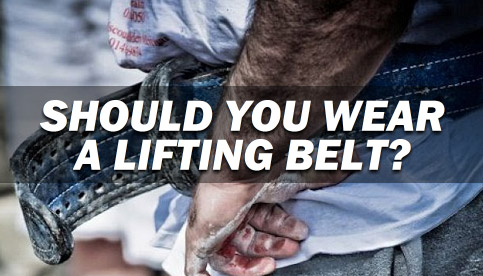
“Should I wear a weightlifting belt?”
Although you’ll often be answered with a definite “yes” or “no” when you ask this question, the real truth is that it depends.
Just like with most questions related to bodybuilding and strength training, it’s not a black and white issue with one single answer for everyone.
Whether or not a lifting belt is right for you depends on several important factors, and that’s what we’ll be discussing in this post.
First off, what is the actual purpose of wearing a weighlifting belt?
The purpose of wearing a weightlifting belt is to increase intra-abdominal pressure.
Just imagine a balloon inflating inside your abs to get a clearer idea of what this means.
On the plus side, this additional pressure improves core stability and provides additional support to your spine and lower back, as well as helping you lift more total weight.
On the negative side, when used excessively, a lifting belt reduces the development of your core muscles and turns the belt into a “crutch” that you’re unable to train properly without.
Although there’s no cut and dry answer here, I will say this as a general over-arching guideline…
The majority of lifters do not need to use a weightlifting belt the majority of the time.
A belt should only be looked at as an extra tool in the arsenal of some lifters that can be worn in select situations where it may be of benefit.
To start off, here are a few situations where I would definitely NOT recommend the use of a weightlifting belt…
When To NOT Use A Weightlifting Belt
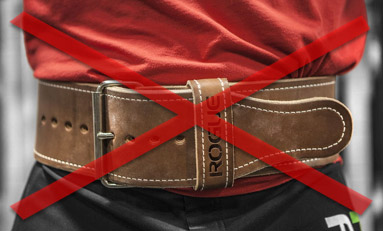
#1 – You’re Still In The Beginning Stages Of Training.
As a novice trainee, all of your focus should simply be placed on building an overall size and strength foundation, and I wouldn’t recommend that you even think about using a lifting belt at this point.
You won’t be lifting very heavy weights yet, and wearing a belt is only going to interfere with your overall development as a lifter by reducing your ability to build proper core strength and by making you reliant on an external tool right from the start.
Weightlifting belts can actually increase the risk for injury in many beginning lifters, as they become over-confident from the support it provides and end up going heavier than they should be and allowing their technique to slip.
The bottom line is that if you’re still a beginner (or even a beginner/intermediate), just concentrate on learning proper lifting technique and gradually increasing your raw total-body strength, and forget about lifting belts altogether.
#2 – You’re Training Primarily To Improve Athletic Performance.
If you’re training for a non-weightlifting sport, a belt should be used very sparingly if at all.
Your goal with athletic training is to build an all-around balanced and functional body, and if you’re not wearing a belt in your chosen sport, you shouldn’t be wearing one in the weight room either.
#3 – You’re Using The Belt As A “Crutch” Throughout Your Entire Workout.
We’ve all seen those guys who enter the gym with their weightlifting belt already securely fastened and keep it on for the duration of their workout whether they’re performing a deadlift or a tricep kickback.
They may think they’re protecting their lower back this way, when in fact they’re actually increasing their chances for injury by not allowing their core strength to develop naturally.
A lifting belt should only be worn when it’s absolutely necessary to do so, and the only lifts I’d recommend using one on are the biggest compound exercises, namely the squat, deadlift and overhead press.
(As a side note, you should never wear a weightlifting belt during exercises that are performed lying or seated)
#4 – You’re Working With Light/Moderate Loads In Higher Rep Ranges.
If you’re training in a range of around 8-10 reps or higher and are using 70% of your one-rep max or lower, there’s no good reason to be using a lifting belt on those types of sets.
For moderate to lighter sets, just focus on proper form and technique and leave the belt alone.
Your Body’s Built-In Weightlifting Belt
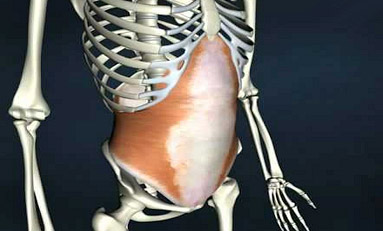
Keep in mind that your core muscles already act as an “internal lifting belt” of sorts, and you’ll want to maximize the engagement and development of that natural belt first before relying on any external tools.
The way to make use of your internal lifting belt is by learning how to “brace your core” any time you perform those big compound lifts.
To do this properly, simply draw a big breath deep into your belly prior to each rep, lock the air in tightly and hold it, and then push your stomach outward as you perform the movement. Exhale once the rep is complete, and then repeat before the next one.
A good cue for this is to perform the same motion you would as if someone was about to punch you in the stomach.
When you engage your core properly like this, the deep abdominal muscles squeeze the viscera (an envelope that holds your organs) upward into your diaphragm and downward into the pelvis, and this increases intra-abdominal pressure in the same way that an external belt does.
When Wearing A Lifting Belt Can Be Useful
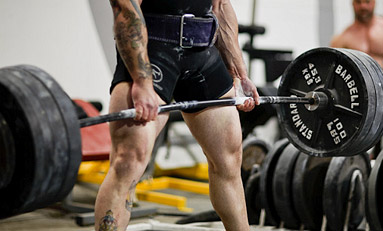
With those points out of the way, that leaves us with the final question of when using a weightlifting belt actually makes sense.
A lifting belt can be optionally used during your workouts if:
- You’re an intermediate or advanced lifter who is well past the novice stage.
- You’ve naturally progressed without a belt and are lifting fairly heavy weights relative to your body weight.
- You’ve mastered the proper technique on all of your exercises.
- You’re performing heavy sets of a squat, deadlift or overhead press with at least 85% of your one-rep max.
If all of these factors are in place, a weightlifting belt can be used to assist you on those all-out heavy sets as a means of increasing strength and reducing injury risk.
It still isn’t mandatory though, and if you’re consistently progressing in weight with proper form and your lower back feels fine, you can simply continue with your beltless training and only begin using one when or if it becomes necessary.
The only other situation where a weightlifting belt might make sense is for those individuals who are dealing with pre-existing lower back issues.
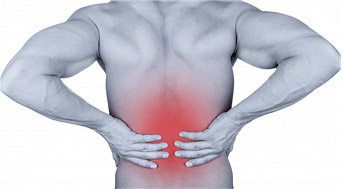
As long as you’re taking active steps to strengthen your core separately and you’re NOT using the belt as merely a “band-aid fix” to toss around heavy weights, a belt can be optionally used to provide additional support and reduce lower back strain if you find that it helps you.
If you do decide to wear a weightlifting belt though, just make sure you’re doing so properly or it may end up doing you more harm than good.
That means wearing your belt tight enough to provide significant support, but also loose enough that you’re still able to draw a full breath into your stomach.
As you draw in that breath, you should feel your entire trunk fill up with air and should feel pressure on the belt in all directions, not just in the front.
The purpose of the belt is to provide something extra to brace your abs and core against, so always make sure to leave enough space to allow for this.
If you can’t breathe properly, loosen the belt up a notch or two.
Should You Wear A Weightlifting Belt? The Bottom Line
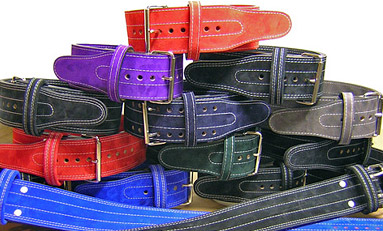
A weightlifting belt is simply an optional extra tool that can be used by advanced lifters moving very heavy loads on lower rep sets, or by those with lower back issues.
In all other cases I’d suggest developing your total-body strength without the assistance of a belt and only using one if it becomes absolutely necessary.
Also keep in mind that whether you’re using a belt or not, you should always be incorporating separate direct core training into your plan with exercises such as planks and crunches regardless.
A lifting belt is NOT there to do the work for you and it isn’t a replacement for having a strong core.
It can help take your training to the next level and allow you to push the envelope into those higher poundages, but when used improperly or in the wrong situation, the use of a lifting belt can actually be counter-productive.
If you found this article helpful, make sure to sign up for your FREE custom fitness plan below...




